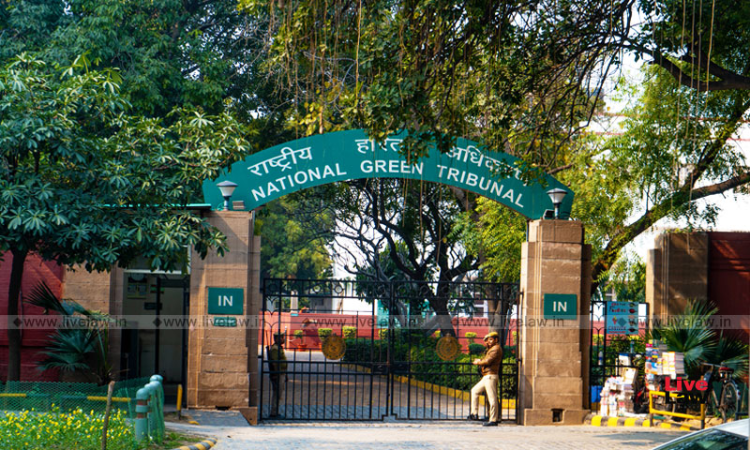Expeditious But Not Effective: Exercise Of NGT's Suo Moto Powers In Industrial Accidents Cases
Haaris Moosa & Nupur Chowdhury
28 July 2020 11:24 AM IST

The orders and judgments of the National Green Tribunal in cases relating to two recent industrial accidents, the first one involving LG Polymers near Visakhapatnam, Andhra Pradesh and the second involving the Neyveli Lignite Corporation in Cuddalore, Tamil Nadu, deserve analysis for shared peculiarities. These are not the first instances of exercise of suo moto jurisdiction by the NGT. Indeed, despite there being no statutory legal basis and opposition by the Ministry of Environment and Forests, the NGT has taken suo moto cognizance in various instances since 2013. However, what is unique in these two cases, is the exercise of suo moto cognizance even when there were petitions filed by victims. In both these cases large corporations were arraigned as defendants for determining liability for environmental accidents. Both these cases fell within the jurisdiction of the NGT Southern Bench in Chennai. Despite the victims filing petitions before the NGT Southern Bench, it renounced its jurisdiction and the NGT Principal Bench in Delhi took suo-moto action in both instances. Further no amici curiae were appointed after taking cognizance. The similarities enumerated have serious implications on public participation in environmental adjudication before the flagship environmental Tribunal in the country. Public Participation in environmental decision making is accepted as a fundamental tenet of environmental law. The Rio Declaration in 1992 gave it material form through Principle 10.
Arguably the NGT violated this cardinal principle for the simple reason that suo-moto cognizance results in the non-representation of victims in the Supreme Court. For instance, in the LG Polymers case the orders of the NGT were challenged by the company before the Supreme Court. However, the list of respondents who were served notices by the Supreme Court in this appeal never included any of the petitioners in the original case before the NGT. The respondents who were served notices were four government agencies. This essentially meant that the victims remained mute spectators in the adjudication of their rights. This could have been remedied to a certain extent had the NGT appointed an amicus curiae. Further suo moto cognizance provides the NGT extraordinary powers in defining the scope of the litigation which may result in further undermining the rights of the victims to define and pursue legal remedies.
It would have been ideal had NGT not arrogated to itself the role of the de facto first petitioner from Mr. E.A.S. Sarma who had moved the tribunal first in the LG case. The de facto primus inter pares status of the first petitioner in Public Interest Litigation made sure that neither Mr EAS Sarma nor the Centre for Wildlife and Environmental Litigation Foundation (the second and the third petitioners) were served notices or represented in the Supreme Court. The suo-moto action invests in the Tribunal the role of a legal representative. This role becomes crucial when appeals are moved in the Supreme Court in such matters. It can be said that the NGT forfeited its responsibilities as a legal representative in the LG Polymers case.
Relationship between the Principal and the Regional Benches of the NGT are that of co-equals, whose jurisdiction is territorially defined. The Southern Bench renouncing its jurisdiction in favour of the NGT Principal Bench in Delhi in both these cases illustrates the move towards centralization of administrative powers. Regional benches of the NGT were instituted with a view to provide greater access to justice, which now stands undermined.
We are witnessing a general trend in environmental policymaking and adjudication to exclude public participation. Controversy surrounding the Draft EIA notification that seeks to exclude a slew of projects from the EIA process and government's wariness in allowing for adequate time for public comments, provides further evidence of this trend.
India has had a particularly tragic history in providing legal redress in cases of large scale industrial accidents. Bhopal gas tragedy was one of the largest industrial accidents which underlined the weakness of parens patriae doctrine which allowed the executive to represent the legal case of the victims. In the present cases, we see the NGT following a similar path in representing the victims in exercising suo moto cognizance. It is a dangerous trend because it perpetuates the myth of the passive victim without voice or access to legal remedy. This is far from reality. Victims are capable of representing themselves and indeed interested in participating within the litigation process. Denying them representation by exercising irregular administrative force through the exercise of suo moto cognizance inaugurates a culture of adjudicative impunity which must be resisted.
Views are personal only
(Haaris Moosa is an Advocate, Kerala High Court & Nupur Chowdhury is an Assistant Professor of Law, Centre for the Study of Law and Governance, JNU)


